Recent Progress in Intelligent Musical Instruments
Dr Charles Martin - The Australian National University
web: charlesmartin.au mastodon: @[email protected]
Ngunnawal & Ngambri Country
vision
Intelligent Musical Instruments become a normal part of musical performance and production.
why?
Assist professional musicians & composers
Engage novice musicians & students
Reveal creative interaction with intelligent systems
Create new kinds of music!
making intelligent musical predictions
History
Digital Musical Instruments (1979ish-)
Voyager - George E Lewis (1986-)
Continuator - François Pachet (2001)
Wekinator - Rebecca Fiebrink (2009-)
Magenta Project - Google (2016-)
where are all the intelligent musical instruments?
Performance data is diverse

| Music Systems | Data |
|---|---|
| Score / Notation | Symbolic Music, Image |
| Digital Instruments | MIDI |
| Recording & Production | Digital Audio |
| New Musical Interfaces | Gestural and Sensor Data |
| Show Control | Video, Audio, Lighting, Control Signals |
Predicting sequences
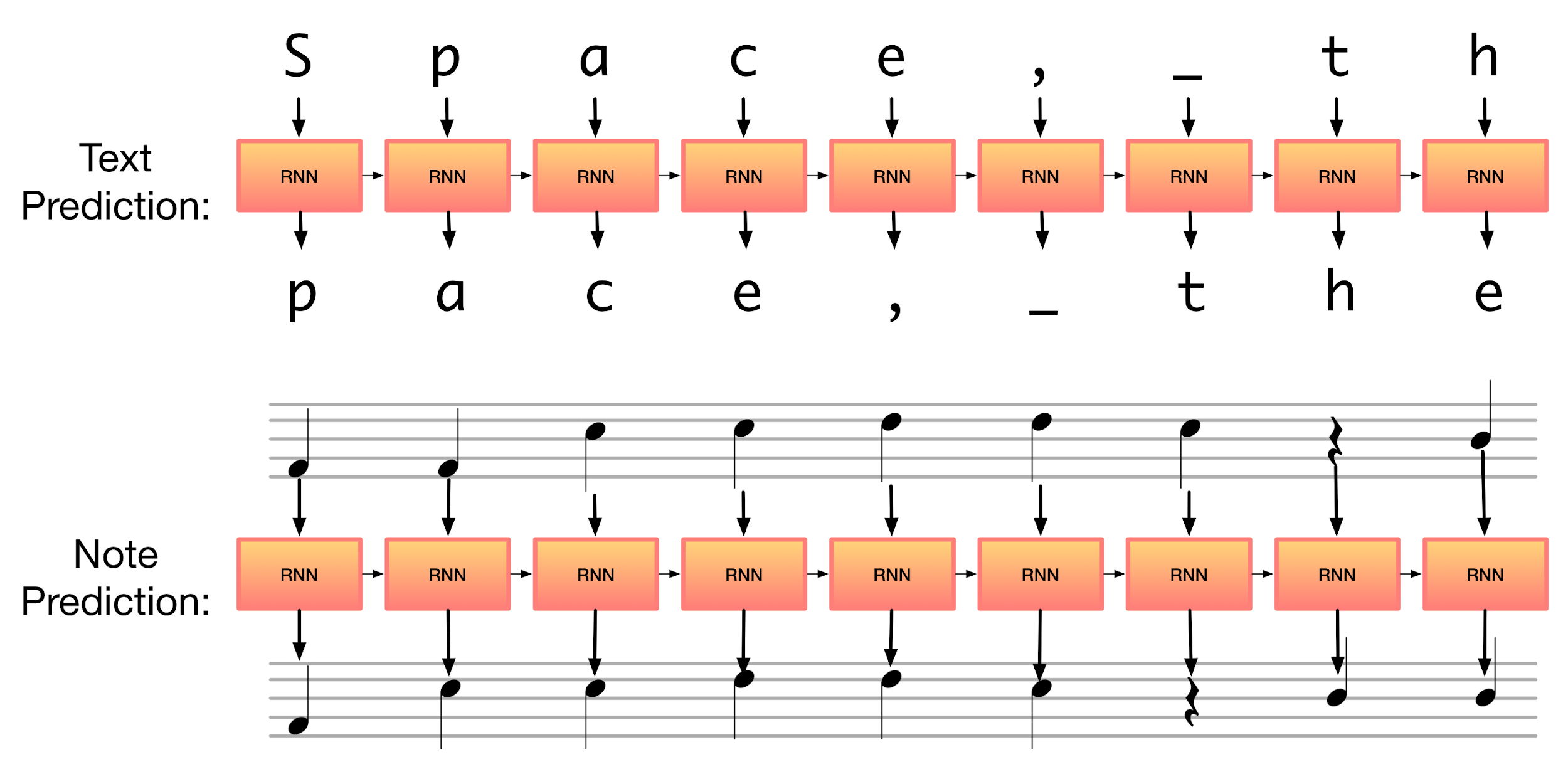
Interacting with predictions

creating an orchestra of intelligent instruments…
Interactive RNN Instrument
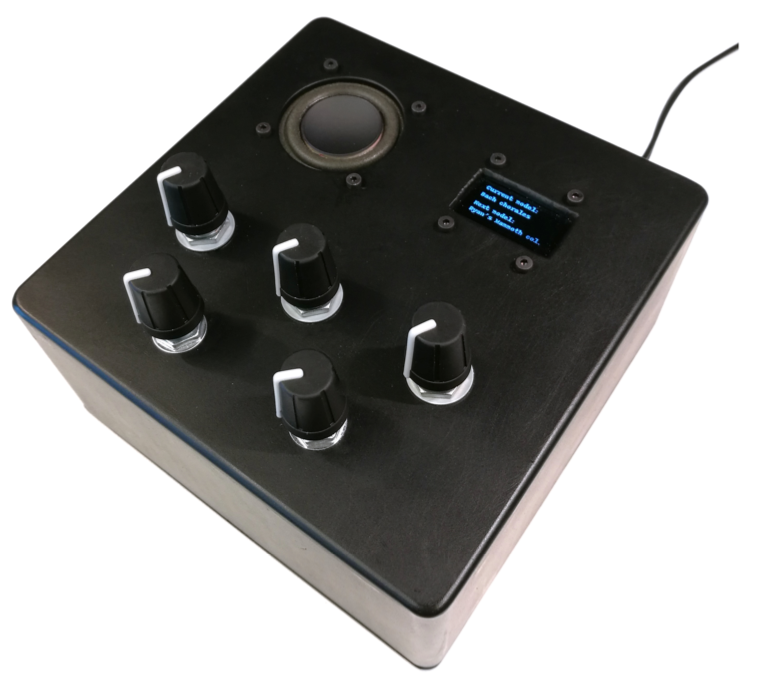
- Generates endless music with a melody RNN.
- Switchable Dataset.
- Controls for sampling “temperature”.
Physical Intelligent Instrument
GestureRNN
GestureRNN

- Predicts 1 of 9 “gestures” for three AI performers.
- Trained on labelled data from 5 hours of quartet performances.
- Actual “sounds” are chunks of each gesture played back.
RoboJam
Robojam and Microjam
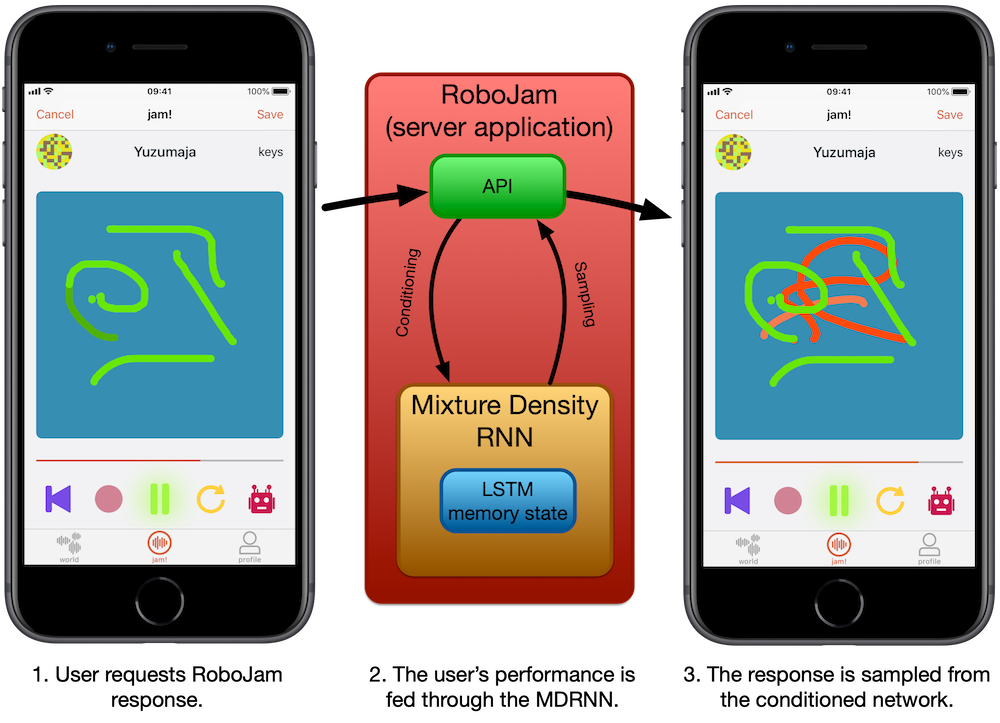
- Predicts next touch location in screen (x, y, dt).
- Trained on ~1500 5s performances.
- Produces duet “responses” to the user.
Mixture Density Network

IMPS System
IMPS System
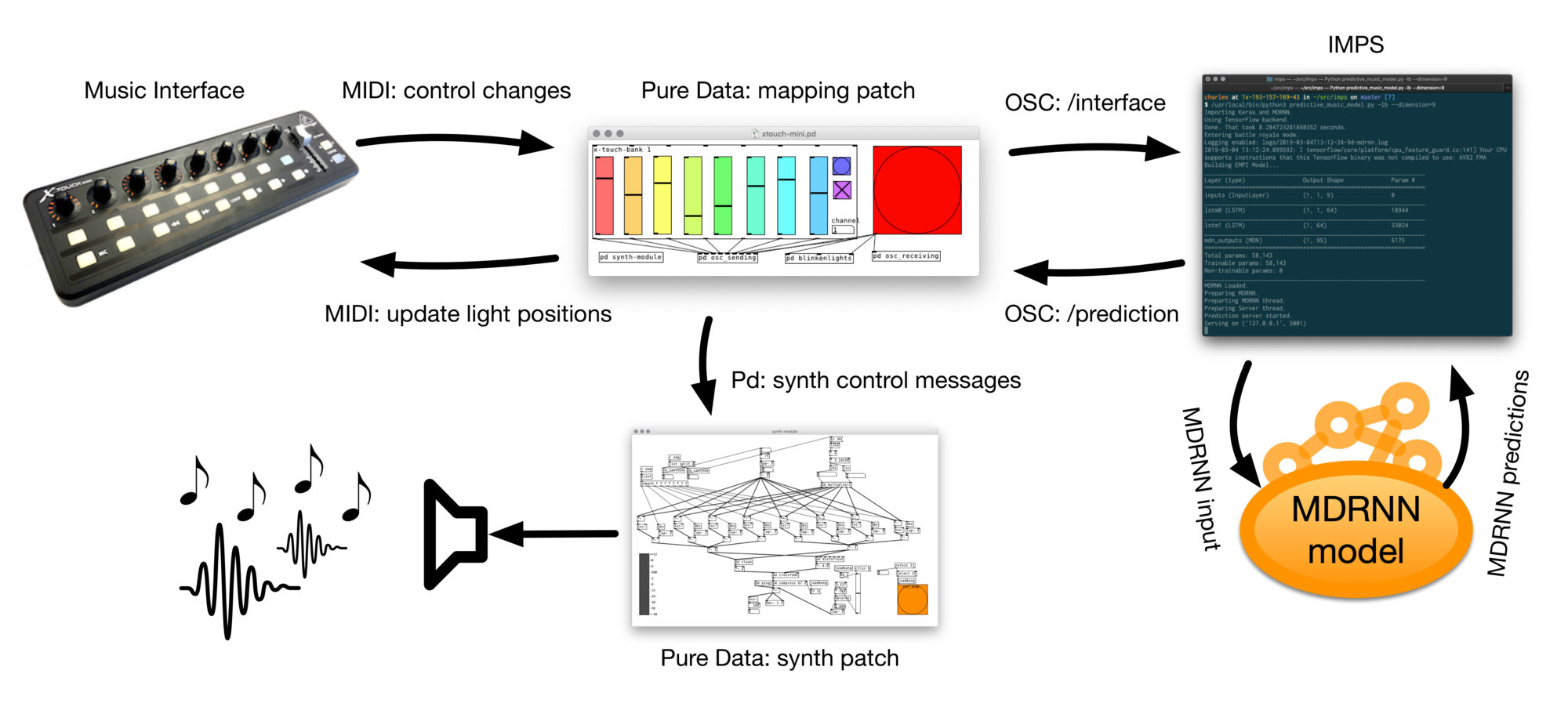
- Opinionated Neural Network for interacting with NIMES.
- Automatically collects data and trains.
- “Wekinator” for deep learning?
Three easy steps…
- Collect some data: IMPS logs interactions automatically to build up a dataset
- Train an MDRNN: IMPS includes good presets, no need to train for days/weeks
- Perform! IMPS includes three interaction modes, scope to extend in future!
Experiment: Is this practical?
- Is it practical for real-time use?
- How do the MDRNN parameters affect time per prediction?
- What are “good defaults” for training parameters?
- Do you need a powerful/expensive computer?
Test Systems

Results: Time per prediction

Time per prediction (ms) with different sizes of LSTM layers.
Results: Time per prediction
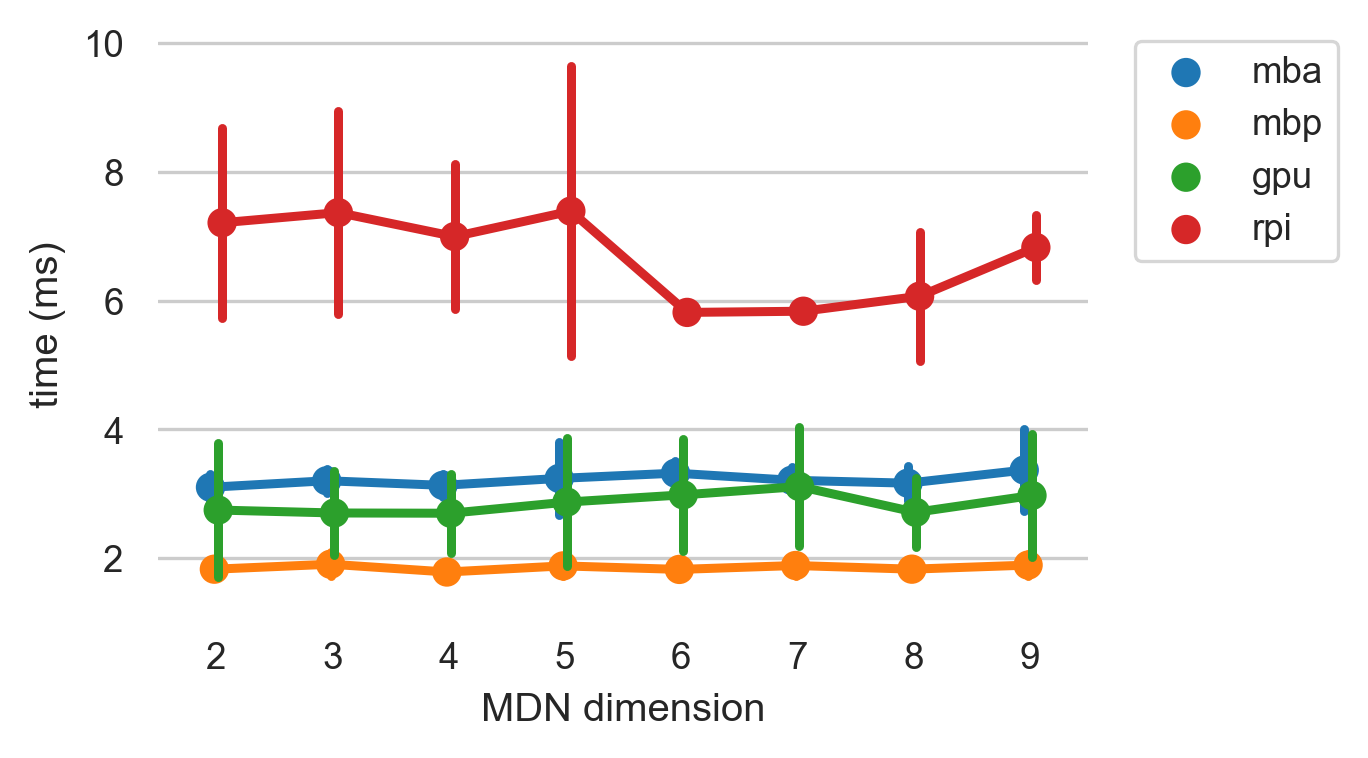
Time per prediction (ms) with different MDN output dimensions. (64 LSTM units)
Results: Training Error vs Validation Set Error
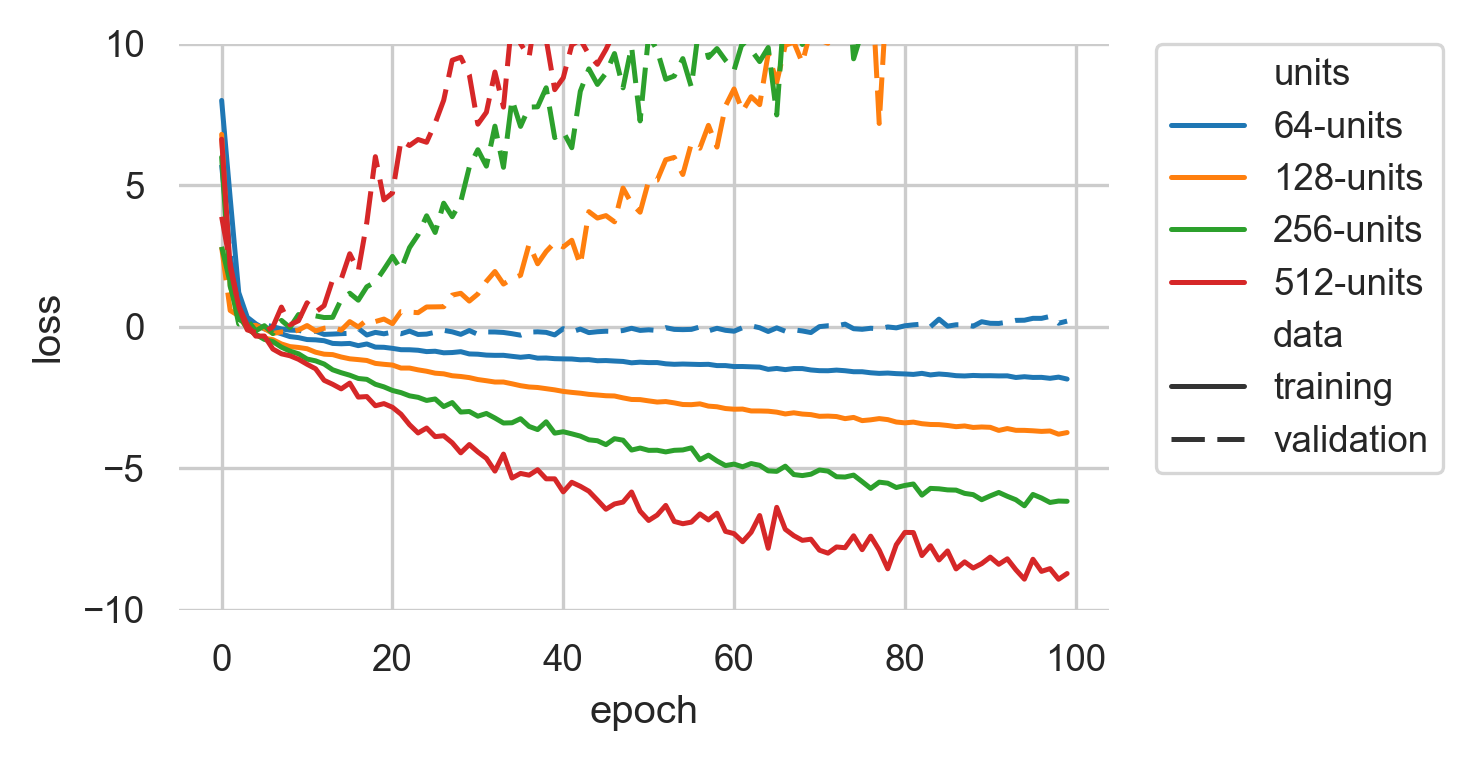
12K sample dataset (15 minutes of performance)
Takeaway: Smallest model best for small datasets. Don’t bother training for too long.
Results: Training Error vs Validation Set Error

100K sample dataset (120 minutes of performance)
Takeaway: 64- and 128-unit model still best!
Results: Exploring Generation
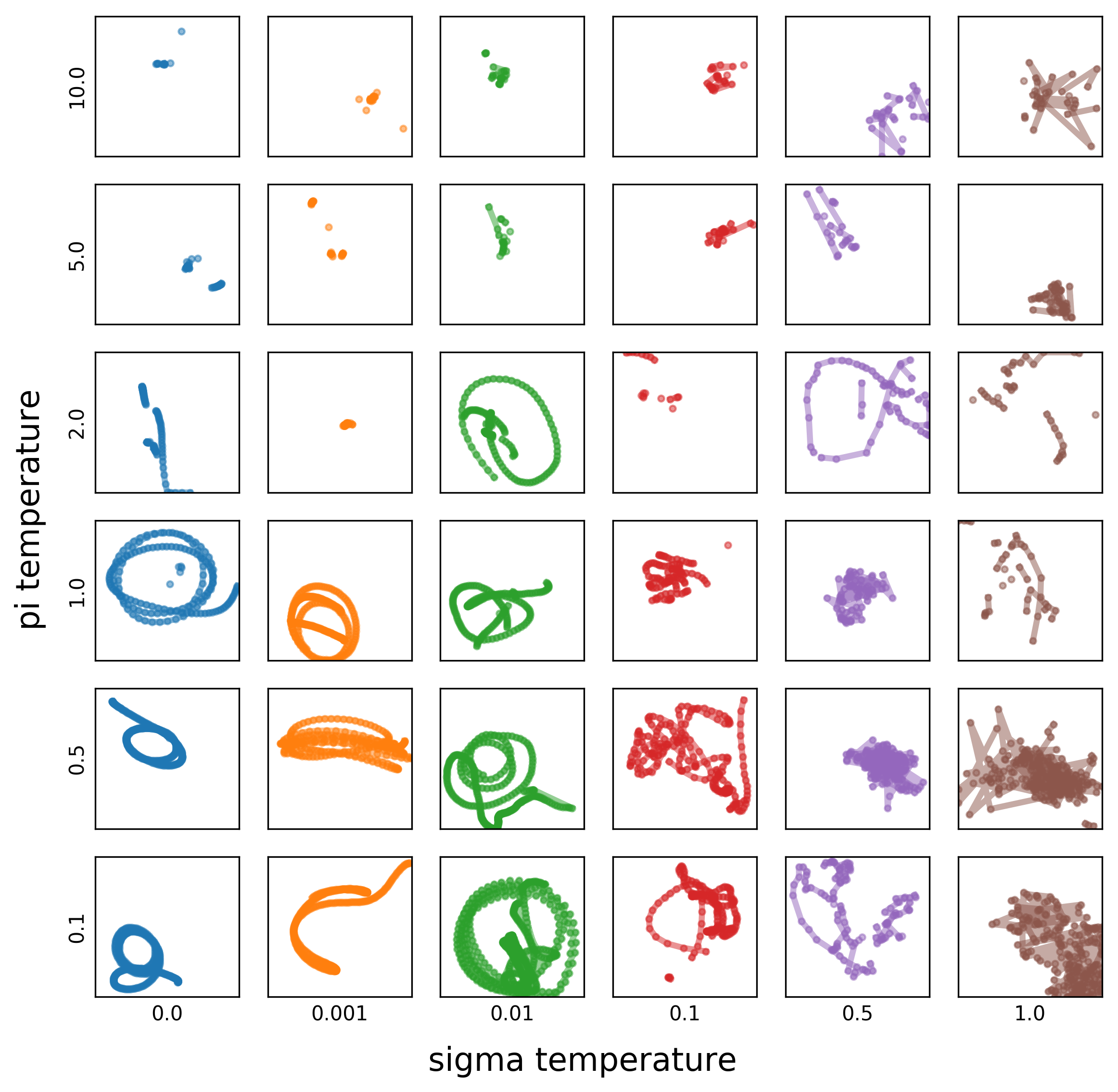
Takeaway: Make Gaussians less diverse, make categorical more diverse.
Embodied Predictive Musical Instrument (EMPI)
Embodied Predictive Musical Instrument (EMPI)
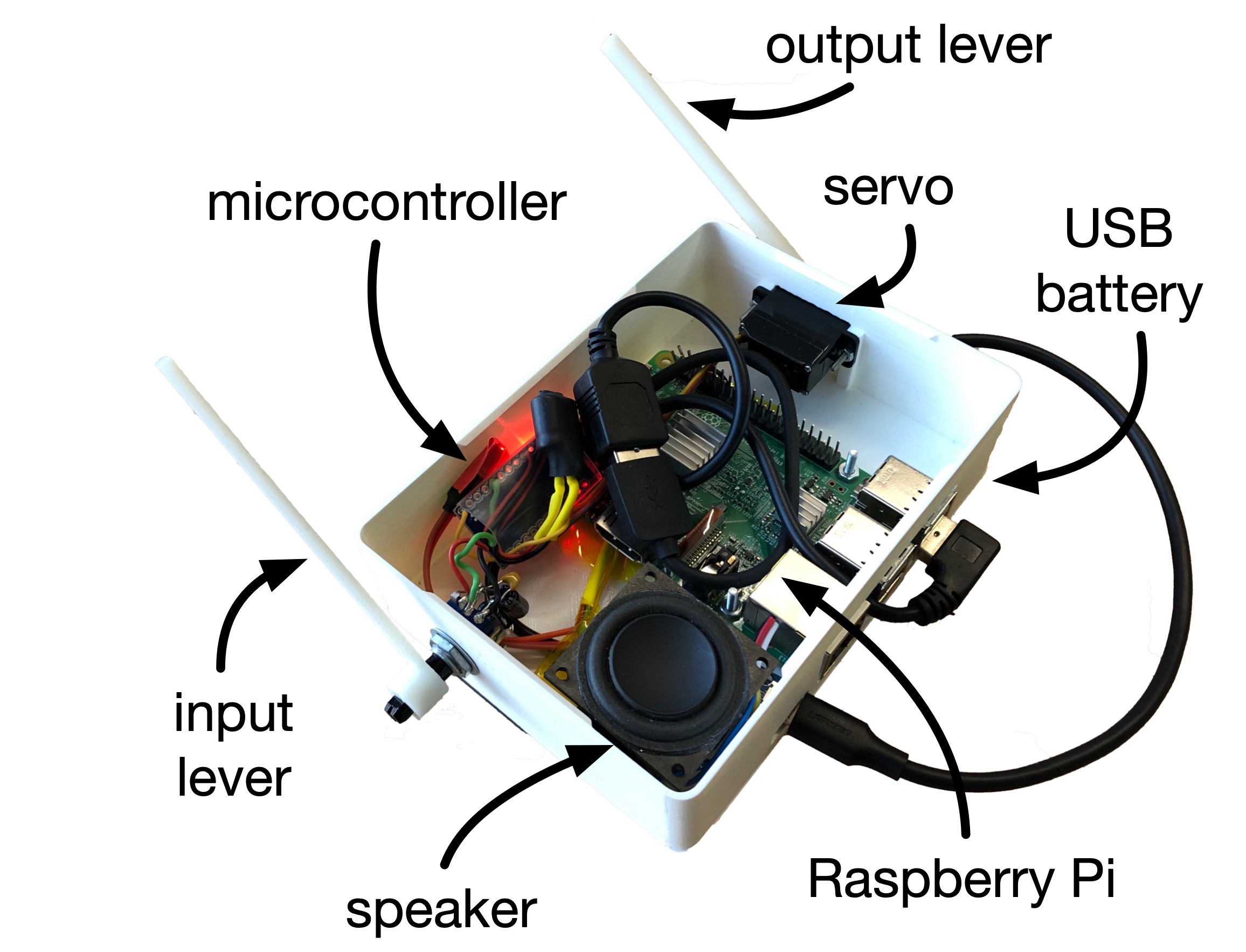
- Predicts next movement and time, represents physically.
- Experiments with interaction mappings; mainly focussed on call-response
- Weird and confusing/fun?
Training Data

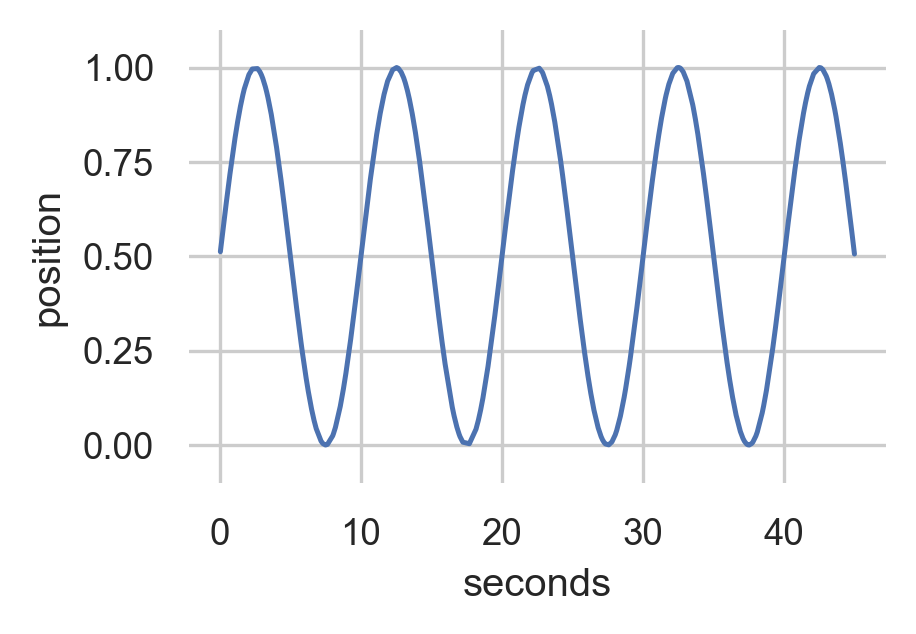
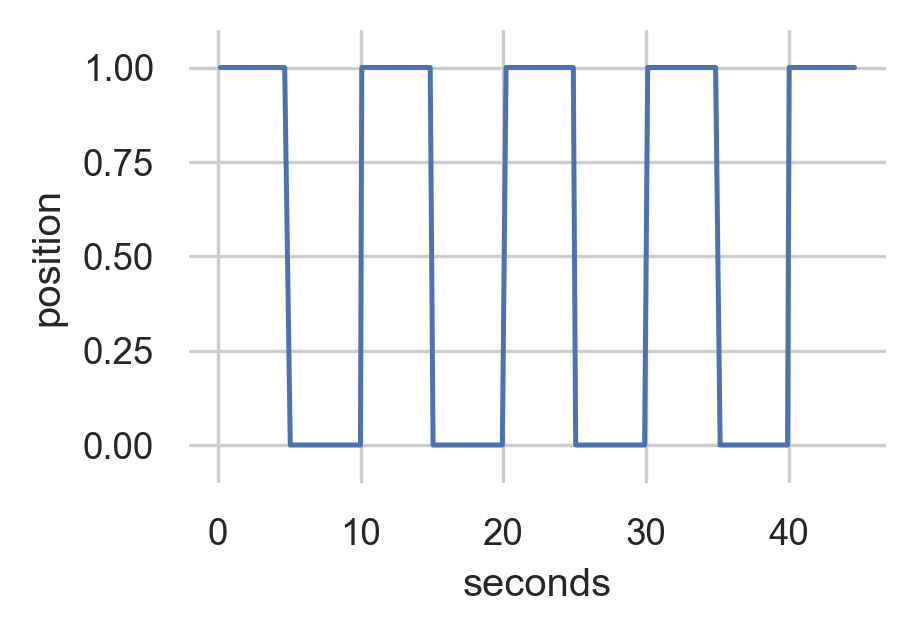
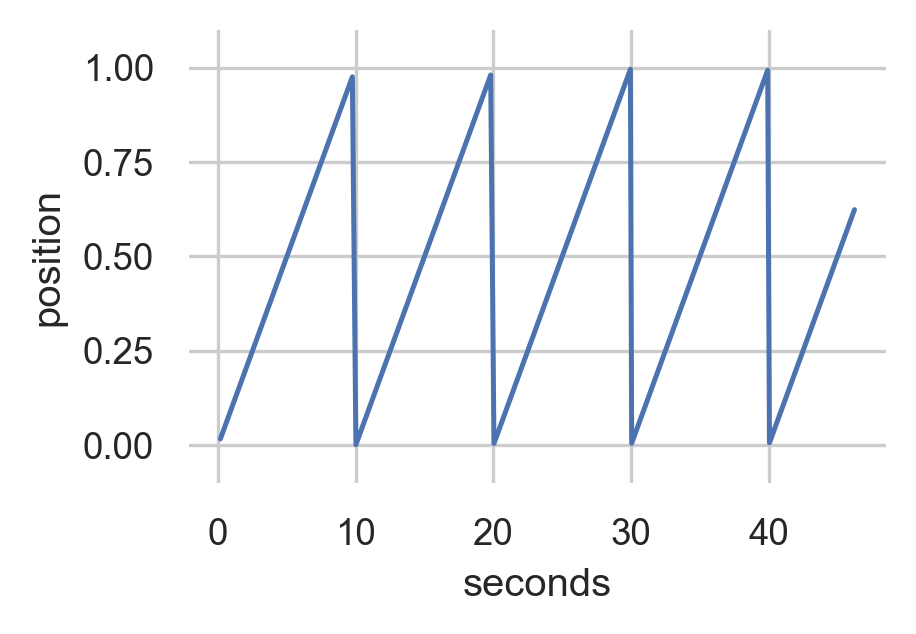
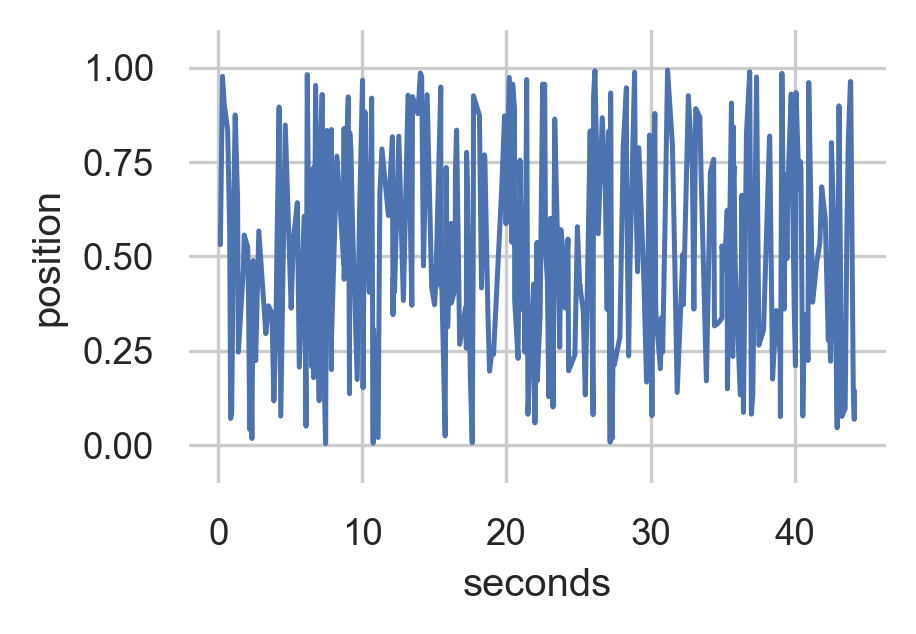
Generated Data



Improvisations with EMPI
-
12 participants
-
two independent factors: model and feedback
-
model: human, synthetic, noise
-
feedback: motor on, motor off
Results: Survey
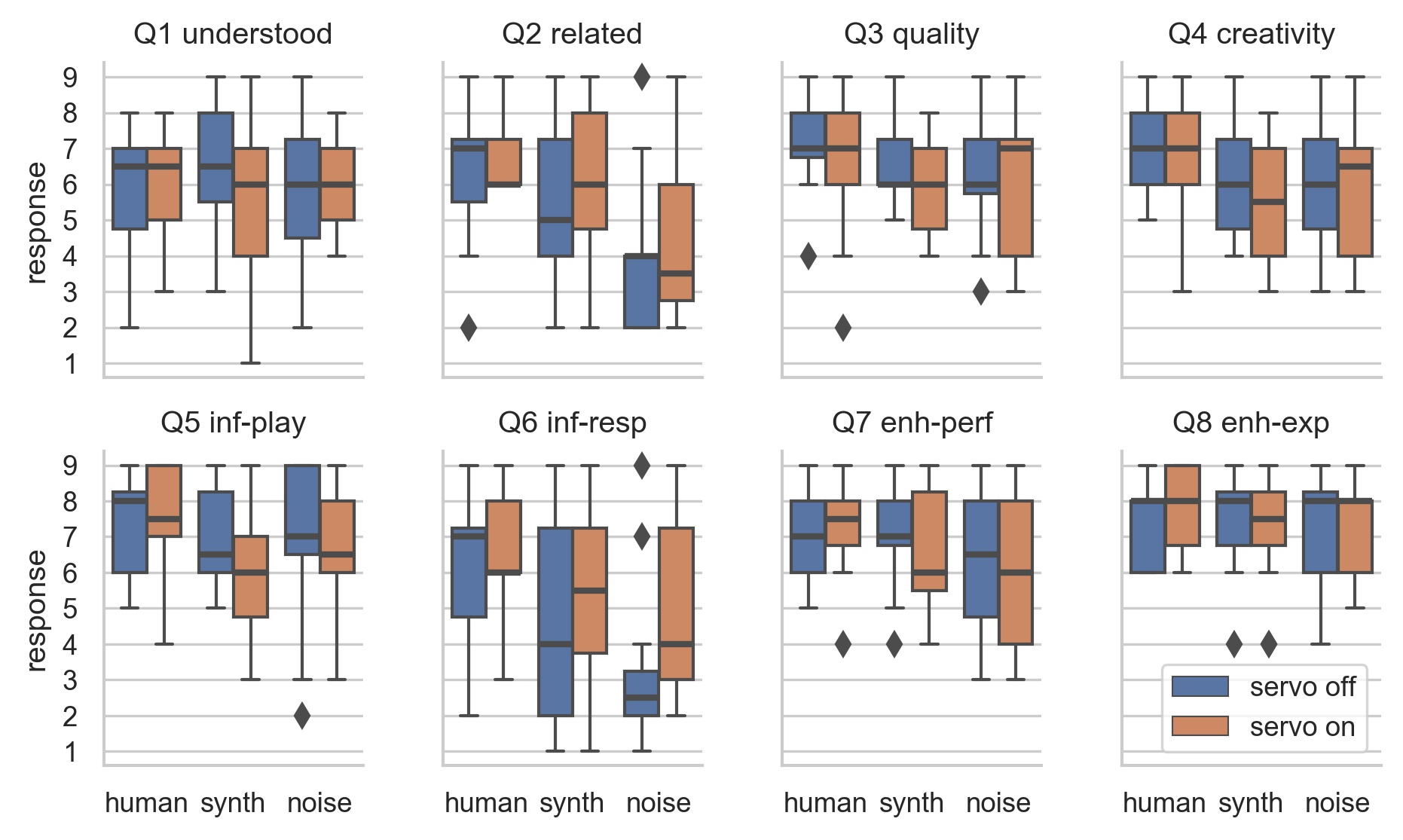
Change of ML model had significant effect: Q2, Q4, Q5, Q6, Q7
Results: Survey
-
human model most “related”, noise was least
-
human model most “musically creative”
-
human model easiest to “influence”
-
noise model not rated badly!
Participants generally preferred human or synth, but not always!
Results: Performance Length

Human and synth: more range of performance lengths with motor on.
Noise: more range with motor off.
Takeaways
Studied self-contained intelligent instrument in genuine performance.
Physical representation could be polarising.
Performers work hard to understand and influence ML model.
Constrained, intelligent instrument can produce a compelling experience.
How can intelligent instruments help us make music?
Emulate or enhance ensemble experience
Engage in call-and-response improvisation
Model a performer’s personal style
Modify/improve performance actions in place
Research questions...
Are ML models practical for musical prediction?
Are intelligent instruments useful to musicians?
What happens when musicians and instrument co-adapt?
Can a musical practice be represented as a dataset?
What does a intelligent instrument album / concert sound like?
Thanks!

- IMPS on GitHub
- creative ML: creativeprediction.xyz
- Twitter/Github: @cpmpercussion
- Homepage: charlesmartin.com.au